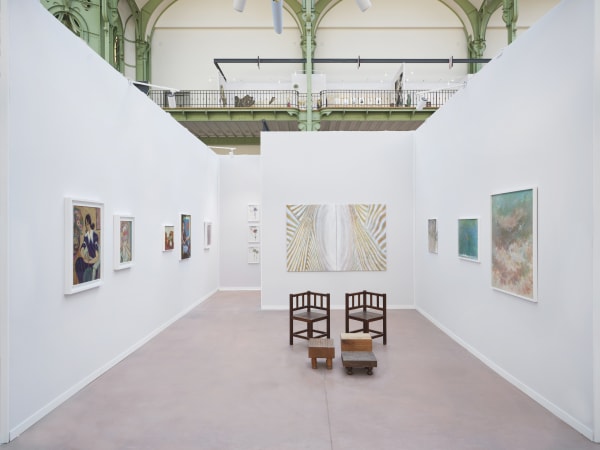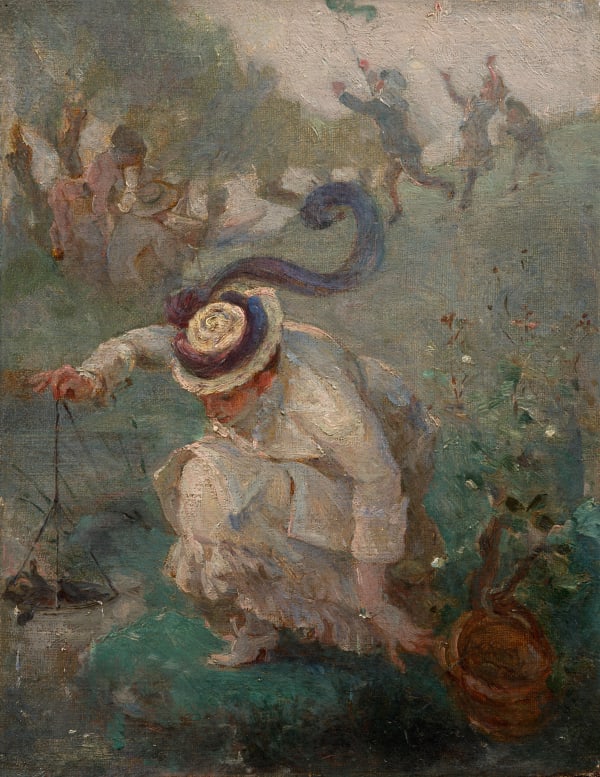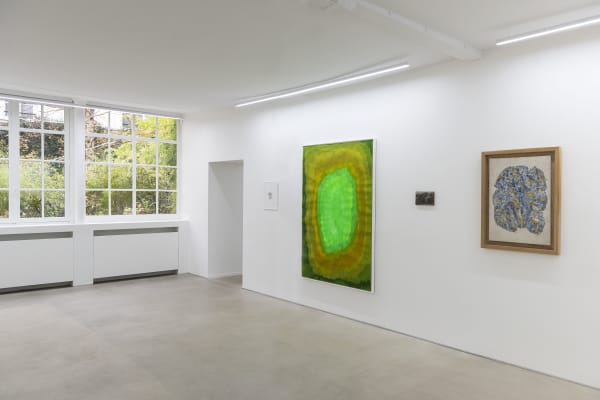« Ce nest pas le moment de dénombrer une œuvre, qui sera réunie un jour, après la tempête de fer et feu abattue sur la France. Ce jour-là, on connaîtra la force et la finesse d'une telle artiste, par ces représentations exquises de femmes, de jardins, de fleurs, où la science du dessin, l'harmonie de la couleur, la dorure de la lumière, se complétaient pour fixer la beauté fugitive de la vie, et aussi par la série de portraits gravés où l'élève d'Ingres et de Bracquemond ajoutait à ces enseignements sévères la poésie féminine.»
Gustave Geffroy après le décès de Marie Bracquemond, janvier 1916.
Issue d’un milieu plutôt modeste, Marie Bracquemond, née Quivoron, est une artiste impressionniste qui s’illustre par la diversité de son œuvre. Elle se forme d’abord à Étampes dans les années 1850, avant de recevoir les conseils de Jean-Auguste-Dominique Ingres (1780-1867). Dans les années 1860, elle approfondit sa formation à Paris auprès des peintres Désiré François Laugée (1823-1896), Émile Signol (1804-1892) et Hugues Merle (1822-1881). Entre 1859 et 1875, elle entame une carrière de peintre et expose au Salon, d’abord sous le nom de sa mère, Pasquiou ou Pasquiou-Quivoron, des portraits et des scènes inspirées du Moyen Âge et de la littérature. Son travail est alors la source de revenus du foyer qu’elle forme avec sa mère et sa demi-sœur, grâce à la commande de copies puis à son poste de professeure de dessin pour la Ville de Paris.
En 1869, son mariage avec le graveur et céramiste Félix Bracquemond (1833-1914), rencontré au musée du Louvre, influe sur sa carrière. Entre 1872 et 1881, elle met à profit sa formation de peintre sous sa direction au sein de l’atelier d’Auteuil et renouvelle le décor sur céramique pour la manufacture Haviland. Pour l’Exposition universelle de 1878, elle réalise un panneau de céramique monumental sur un sujet allégorique, Les Muses des arts, aujourd’hui perdu. Elle introduit des motifs de la vie moderne sur des vases et des assiettes, sujets développés ensuite par le dessin de presse (pour la revue La Vie moderne, entre 1879 et 1886) et en peinture autour de la figure féminine en plein air. Limitée dans son accès aux modèles, l’artiste étudie en réalité les effets de lumière en représentant maintes fois sa sœur dans son jardin de Sèvres, comme dans La Dame en blanc.
En 1879, 1880 et 1886, M. Bracquemond participe aux expositions impressionnistes, certainement à l’invitation d’Edgar Degas (1834-1917). Elle montre alors la diversité de son art (cartons préparatoires pour Les Muses des arts, faïence, peintures, aquarelles), mais sans exposer les œuvres qui s’approchent le plus, par la technique et les couleurs, de celles d’artistes du groupe (Sur la terrasse, à Sèvres, 1880). Ainsi, en 1886, elle présente non pas l’huile sur toile mais les dessins préparatoires des Trois Grâces (vers 1880). F. Bracquemond s’opposerait alors aux évolutions stylistiques de son épouse.
M. Bracquemond, qui participe en 1881 à l’exposition Black and White de la Dudley Gallery à Londres, se tourne dans les années 1880 vers l’eau-forte originale. En 1890, elle expose avec la Société des peintres-graveurs français à la galerie Durand-Ruel. Son Autoportrait gravé est particulièrement remarqué par Henri Beraldi, écrivain spécialiste des estampes. En 1893, lors de sa dernière exposition, elle présente deux estampes au sein du Woman’s Building de l’Exposition universelle de Chicago. Elle interrompt brutalement sa carrière publique et ne pratique alors la peinture et l’aquarelle que dans un cadre privé.
En 1919, trois ans après la mort de M. Bracquemond, son fils unique, Pierre Bracquemond (1870-1926), réunit cent cinquante-sept de ses œuvres pour une exposition rétrospective à la galerie Bernheim-Jeune. Gustave Geffroy, qui en préface le catalogue, avait consacré un chapitre à l’artiste dès 1894 dans son Histoire de l’impressionnisme. Si M. Bracquemond est restée de son vivant dans l’ombre de son mari artiste, et tombée ensuite dans l’oubli, des études et des expositions valorisent depuis quelques décennies son œuvre. En 2019, le musée d’Orsay exposait des dessins et aquarelles de l’artiste au sein du parcours « Femmes, art et pouvoir ». D’autres collections publiques conservent une partie de ses œuvres, à Paris (Petit Palais, Bibliothèque nationale de France), dans d’autres villes françaises (musée des Beaux-Arts à Rouen, musée Adrien Dubouché à Limoges, musée Fabre à Montpellier) et même à l’étranger (Metropolitan Museum of Art à New York et Art Institute of Chicago, entre autres).
Publication réalisée en partenariat avec le musée d’Orsay.
© Archives of Women Artists, Research and Exhibitions
Collections Publiques
International
MET - Metropolitan Museum of Art, New York, New York, USA
Art Institute, Chicago, Illinois, USA
The Clark, Williamstown, Massachusetts, USA
RISD Museum - Rhode Island School of Design Museum, Providence, Rhode Island, USA
Artizon Museum, Tokyo, Japan
Ordrupgaard Museum, Copenhaguen, Denmark
Van Gogh Museum, Amsterdam, Netherland
Petit Palais, Genève, Switzerland
Birmingham Museum of Art, Alabama, USA
National Museums Liverpool, UK
France
Musée d’Orsay, Paris, France
Musée du Louvre, Paris, France
Musée Carnavalet, Paris, France
Petit Palais - Musée des Beaux-Arts de la Ville de Paris , Paris, France
CNAP - Centre National des Arts Plastiques, Paris, France
Musée des Arts Décoratifs, Paris, France
Mobilier National, Paris, France
Bibliothèque Nationale de France, Paris, France
Musée des Beaux-Arts, Cambrai, France
Musée Adrien Dubouché, Limoges, France
Musée Fabre, Montpellier, France
Musée Sainte-Croix, Poitiers, France
Musée des Beaux-Arts, Rouen, France
FAMM, Mougins, France
-

OMBRES ET LUMIÈRES
MARIE BRACQUEMOND avec une oeuvre de Thu-Van Tran 6 Février - 8 Mars 2025Marie Bracquemond (1840-1916) est une figure majeure de l’impressionnisme, bien que longtemps marginalisée dans l’histoire de l’art. Née à Argenton-en-Landunvez, elle montre dès son plus jeune âge un intérêt pour...Lire plus -

LES DÉSERTEURS
BAS JAN ADER | MARIE BRACQUEMOND | GUSTAVE COURBET | SALVADOR DALÍ | QUENTIN DEROUET | SIMON HANTAÏ | VICTOR HUGO | JACQUELINE LAMBA | ROBERT MALAVAL | FLORA MOSCOVICI | OLIVIER MOSSET | GEORGES RIBEMONT-DESSAIGNES | JULIETTE ROCHE | MATHILDE ROSIER 5 Décembre 2024 - 11 Janvier 2025BAS JAN ADER | MARIE BRACQUEMOND | GUSTAVE COURBET | SALVADOR DALÍ | QUENTIN DEROUET | SIMON HANTAÏ | VICTOR HUGO | JACQUELINE LAMBA | GHERASIM LUCA | ROBERT MALAVAL...Lire plus
-

ART BASEL PARIS
MARIE BRACQUEMOND 22 - 26 Octobre 2025Pour Art Basel Paris 2025, la galerie Pavec désormais reconnue pour son travail de recherche et de revalorisation d’artistes femmes historiques, est heureuse de revenir...Lire plus -

ART PARIS
2 - 6 Avril 2025MARIE BRACQUEMOND | QUENTIN DEROUET | MADELEINE DINÈS | JACQUELINE LAMBA | FLORA MOSCOVICI | JACQUES PRÉVERT | JULIETTE ROCHE | MATHILDE ROSIERLire plus -

TEFAF MAASTRICHT
MARIE BRACQUEMOND 13 - 20 Mars 2025Forum100 6229 GV Maastricht The NetherlandsLire plus





